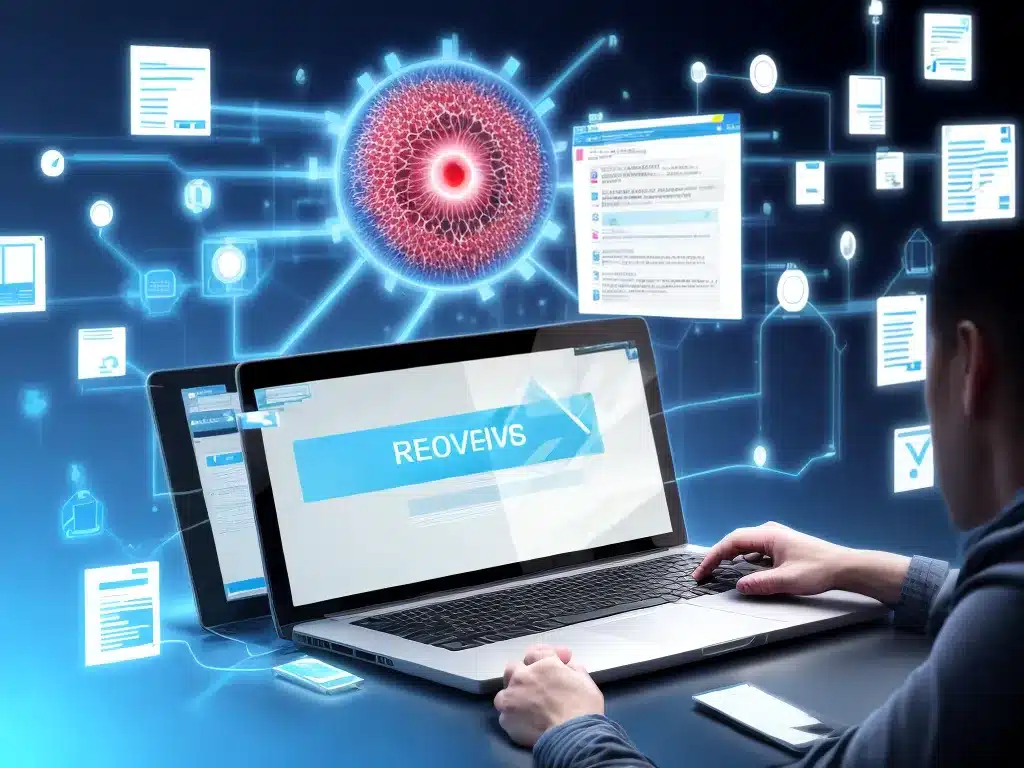
Having your computer infected by a virus can be a scary and frustrating experience. As someone who has been through this, I know the feeling of panic when you realize something malicious has gotten into your system and possibly corrupted or deleted important files. However, try not to despair! In many cases, you can recover your data, you just need to know the right steps to take. Here is my guide to recovering files after a virus infection:
Assess the Situation and Keep Calm
The first thing I do upon suspecting a virus is try to stay calm and get an understanding of what exactly is going on. Is my computer running slow or acting strange? Are there weird pop ups or programs I don’t remember downloading? Are certain files missing or corrupted? Taking stock of the symptoms helps identify that something is definitively wrong.
It’s important not to panic and start hastily clicking on things that could make the issue worse. Viruses are designed to cause chaos, so reacting in a frenzied way can sometimes play right into what the attackers want. Take a few deep breaths, keep a level head, and prepare to systematically address the problem.
Disconnect from the Internet and Stop Using the Infected Device
As soon as I confirm the computer is infected, I immediately disconnect it from the internet and any other devices or networks it’s linked to. This helps isolate the virus and prevent it spreading. Continuing to use the infected device can risk the virus burrowing deeper or infecting external drives you connect to it.
I know it’s disruptive, but quarantining the impacted machine is a critical first response. For peace of mind, I also run antivirus scans on any other devices that were connected to the infected one, just to check the virus didn’t spread.
Use Antivirus Software to Eliminate the Virus
Next up is leveraging antivirus software to locate and eliminate the virus. I manually trigger a full system scan to identify any infected files or suspicious programs. The antivirus should offer options to quarantine or remove any threats it discovers to disinfect your computer.
However, bear in mind that antivirus software isn’t foolproof. Sophisticated modern viruses can sometimes evade detection or disable your security. So it’s important to also dig a little deeper…
Investigate and Remediate Any Impacted Areas
Beyond scanning with antivirus software, I do some tests and manual investigation to check for anything irregular. I examine running processes and startup programs to spot anything shady that has enabled itself to run on boot up. I comb through the registry, file system, and other parts of the OS to check for impacted settings or strange artifacts left behind.
If I discover the virus has tampered with certain files or settings, I can revert any changes and delete anything that shouldn’t be there. While tedious, this type of targeted remediation helps eliminate remnants that antivirus alone might have missed.
Attempt Data Recovery Using Backup
Once the virus is removed, the next priority is getting back any lost or impacted files. If I have a recent backup from before the infection occurred, that represents the simplest recovery option. I can restore corrupted documents, missing media files, and any other personal data from the backup rather than having to retrieve it manually.
However, without a backup, I need to turn to data recovery software…
Use Data Recovery Software to Rescue Deleted Files
If I don’t have a backup, specialized data recovery software provides the best chance of getting back deleted items. Software like Recuva scans the hard drive and pulls recoverable files from unallocated space that hasn’t yet been overwritten. As long as I haven’t continued extensively using the computer, chances are decent for retrieving at least some deleted files.
The key with recovery software is to use it as soon as possible before new data writes over the old. I also avoid saving the recovered files back to the same drive I’m scanning, as this can overwrite what I’m trying to get back!
Seek Professional Help for Mechanical or Encryption Issues
If DIY software recovery hits dead ends, another option is to consult a professional recovery service. They employ more advanced techniques like rebuilding RAID arrays, repairing filesystems, and bypassing encryption. This comes at a higher cost but offers the greatest chance for rescuing data in difficult situations beyond an average user’s capabilities.
Guard Against Future Infection
Finally, with my files recovered, I take measures to strengthen security and prevent this happening again:
- Install comprehensive antivirus protection
- Avoid suspicious links/attachments
- Backup regularly
- Update software frequently
- Use firewalls and encryption
While a virus infection can be disruptive and frightening, just remember—stay calm, remove the threat, and employ the right tools and techniques. There’s a good chance your data is still recoverable. Don’t abandon hope until you’ve exhausted every option!












